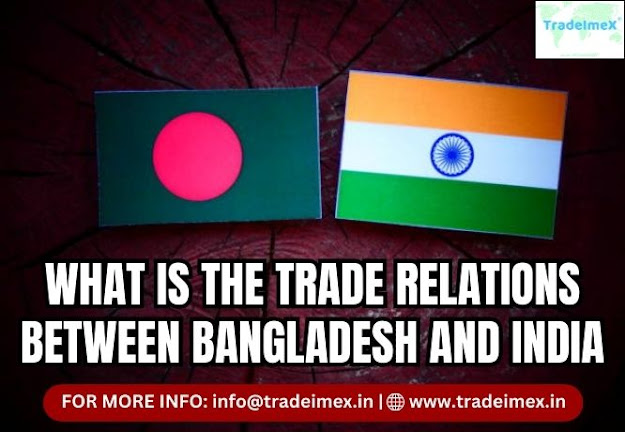WHAT IS THE TRADE RELATIONS BETWEEN BANGLADESH AND INDIA?
INTRODUCTION
Trade relations between Bangladesh
and India have evolved significantly over the years, reflecting a complex web
of economic, political, and geographical factors. The neighboring countries
share a long history, and their trade partnership plays a pivotal role in the
economic well-being of both nations. This blog explores the dynamics of trade
relations between Bangladesh and India, highlighting key trade agreements, challenges,
and opportunities.
HISTORICAL CONTEXT
The trade ties between Bangladesh and
India have deep historical roots. Prior to 1947, both regions were part of
British India. After the partition, Bangladesh emerged as an independent nation
in 1971. Since then, trade between the two countries has been influenced by
their shared history, cultural ties, and geographical proximity.
BILATERAL TRADE AGREEMENTS
1. South Asian Free Trade
Area (SAFTA): SAFTA, implemented in 2006, is a regional initiative aimed at promoting
intra-regional trade among South Asian countries, including Bangladesh and
India. Under SAFTA, these nations have made efforts to reduce tariff barriers
and promote economic cooperation.
2. Most-Favored-Nation (MFN)
Status:
Both countries grant each other MFN status, which ensures that they receive
preferential trade treatment. This status fosters an environment conducive to
trade growth.
3.
TRADE VOLUME AND BALANCE
Over the years, the trade volume
between Bangladesh and India has grown significantly. In 2020-2021, the total
trade volume stood at approximately $10 billion. However, there exists a trade
imbalance, with India exporting more to Bangladesh than it imports.
Bangladesh's Exports to India: As per Bangladesh Export Data
report, the nation primarily exports textiles and garments, agricultural
products, and pharmaceuticals to India. Textiles, especially ready-made
garments, make up a significant portion of these exports.
India's Exports to Bangladesh: India, on the other hand,
exports goods like machinery, chemicals, and raw materials to Bangladesh. The
trade balance has historically been skewed in favor of India.
TRADE CHALLENGES AND RESOLUTIONS
Several challenges have hindered the
trade relationship between the two countries:
1. Trade Imbalance: The persistent trade
imbalance has been a concern for Bangladesh. Addressing this requires a
concerted effort to diversify trade and promote Bangladeshi exports to India.
2. Non-Tariff Barriers: Non-tariff barriers, such
as regulatory complexities and customs procedures, have sometimes impeded
trade. Streamlining these processes could enhance trade efficiency.
3. Infrastructure
Development: Improving infrastructure, especially border crossings and transportation
links, is crucial for facilitating trade. The construction of new transit
routes and the enhancement of existing ones are essential for regional
connectivity.
OPPORTUNITIES AND MUTUAL BENEFITS
1. Regional Integration: Both countries can
benefit from regional integration initiatives like the Bangladesh-China-India-Myanmar
(BCIM) Economic Corridor, which seeks to boost trade and connectivity between
South and Southeast Asia.
2. Energy Cooperation: India and Bangladesh have
cooperated in the energy sector, including electricity export from India to
Bangladesh. Expanding such cooperation can ensure a stable energy supply for
both nations.
3. Investment: Encouraging cross-border
investments can foster economic growth. Both countries can explore
opportunities for joint ventures and partnerships in various sectors.
CONCLUSION
The trade relations between
Bangladesh and India have come a long way, reflecting the complexities of their
historical ties, geographical proximity, and evolving economic landscapes.
While challenges such as trade imbalances and non-tariff barriers exist, both
countries have made efforts to enhance trade cooperation through regional
initiatives like SAFTA and by improving infrastructure.
The future of trade relations between
Bangladesh and India holds immense potential. By addressing existing
challenges, diversifying trade, and further integrating their economies, these
neighboring nations can build a stronger and more mutually beneficial
partnership which can even help in boosting Bangladesh's Import Data
statistics. Ultimately, a robust trade relationship between Bangladesh and
India not only benefits both countries but also contributes to regional
economic stability and growth.



Comments
Post a Comment